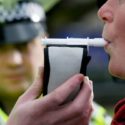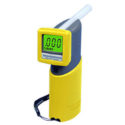There are plenty of DUI attorneys out there. Each one has a different level of experience and a different way of handling cases. Some attorneys try to simply negotiate a plea in every case. We are not that firm.
At Bowser Law, we pride ourselves on fighting for the citizens accused of a crime. We take cases to trial to fight for the best possible result for our clients. When you decide to fight, experience matters. Attorney Bowser’s results prove his success.
In this blog series, we will detail some examples of how experience makes a difference in DWI/OUI cases. Previously in this series, we have covered:
- Knowing the Courts
- Knowing your Options
- The Art of Cross Examination
- Jury Selection
- Interstate Issues
- Trial Skills
Today we will look at Challenging Breath Tests.
Many drivers believe that if they blow a number over the legal limit, a conviction is a forgone conclusion. This could not be further from the truth. A breath test result is just one piece of evidence and an experienced DUI attorney may be able to successfully challenge that result.
Breath testing for DUI is notoriously flawed. There are many common issues which could produce an unreliable test result. For example:
- Breath Testing is not specific to ethanol, the type of alcohol found in beverages. In fact, certain cosmetics, lotions, hand sanitizers, and mouthwashes can trigger a higher than normal result. Use of nail polish remover, common household cleaners, or paint thinner can also cause the breath test to show an artificially high number.
- Certain chemicals in the body can also cause breath tests to show a higher number. This can happen under certain medical conditions like if a diabetic experiences low blood sugar for example.
- One common problem is that of residual mouth alcohol. When there is still alcohol in the mouth, this can produce a very high breath test reading which is not in line with what is actually in the body.
- Breath testing does not measure the amount of alcohol in the blood. The machine measures the amount of alcohol in a breath sample and then makes a number of assumptions about how alcohol is processed in the body to convert that number to what is in the blood. However, these assumptions can lead to many inaccuracies. Alcohol is processed at a very different rate by a 120lb woman as opposed to a 280lb man.
- Breath machines must be maintained and calibrated based on very specific guidelines. Police departments are often very lax in following these procedures and this can lead to invalid test results.
Attorney Mike Bowser has extensively studied the forensic science behind breath testing and uses that knowledge to protect his clients. If there are medical or technical issues that can be used to explain the result, he will raise those and fight for your rights. Call Attorney Mike Bowser at (888) 414-9202 today for your free case consultation.




